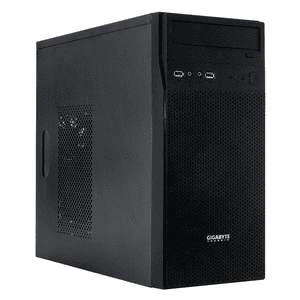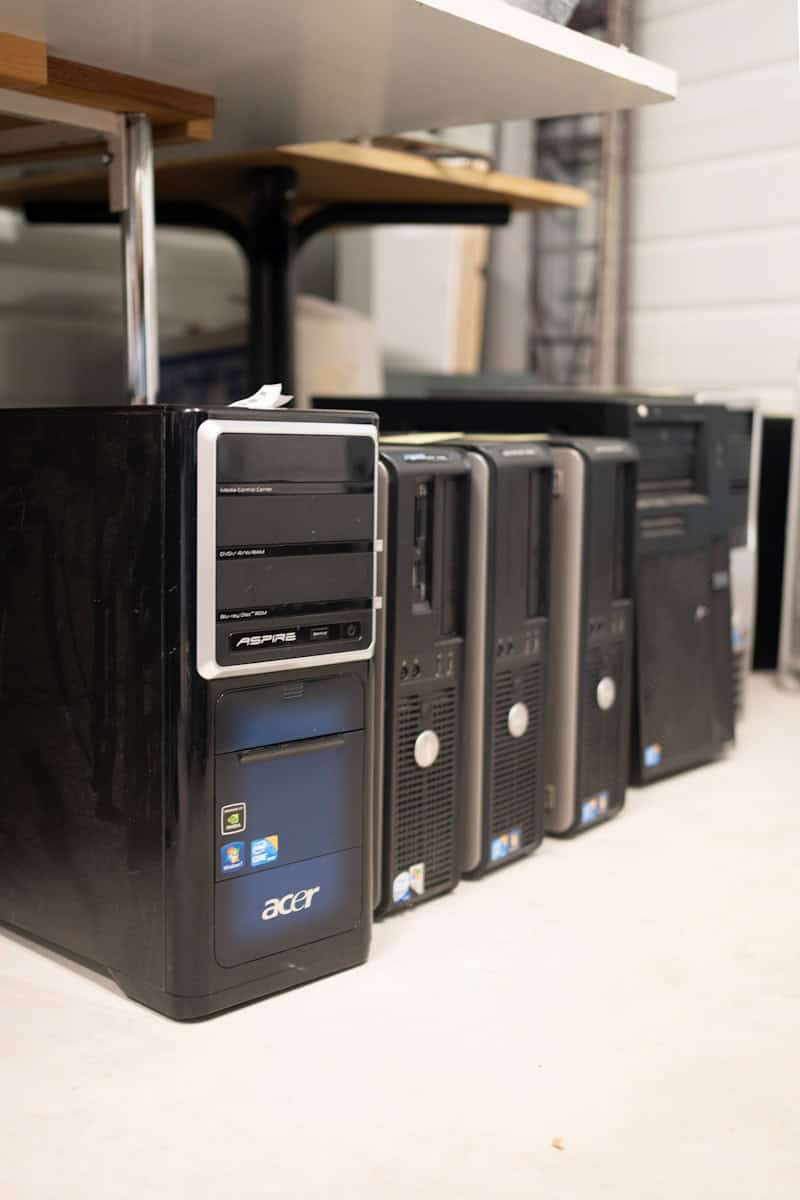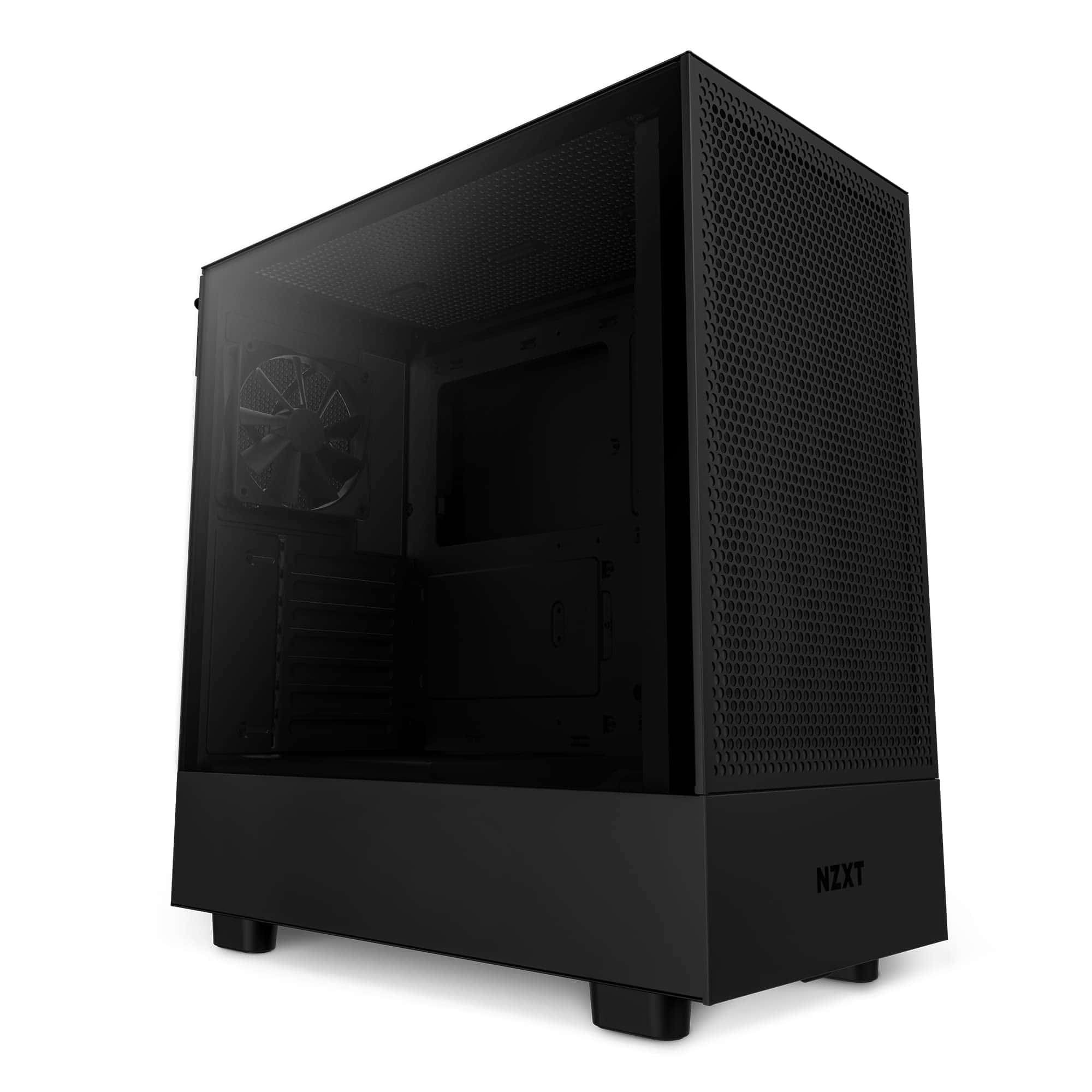Understanding PC form factors is an important part of building or selecting the right computer for specific needs. It’s also a crucial factor when putting together a PC build (because if your parts don’t fit in your case you aren’t getting very far).
The form factor of a case refers to the size, shape, and standards of a PC’s motherboard, which directly influences the size of other components and the overall layout of the system. It is the blueprint that dictates the compatibility and physical organization of a PC, allowing various parts like the case, power supply, and motherboard to fit together seamlessly. Over the years, standardization has played a significant role in the design of PCs, with specific form factors becoming the foundation for most computer designs today.

PC Form Factors
It’s tricky to give exact maximum sizes for PC cases because manufacturers have some flexibility within each form factor. Here are general guidelines for typical maximum dimensions (width × depth × height) to give you a good idea:
| Form Factor | Motherboard Size | Max. Size (approx.) | Description | Uses |
|---|---|---|---|---|
| Full Tower | ATX (or E-ATX) | 24″ × 10″ × 24″ | Largest; most space for expansion cards, water cooling, multiple drives | High-performance gaming, workstations |
| Mid Tower | ATX, Micro ATX | 18″ × 8″ × 18″ | Versatile; good balance of size and expandability | Most common for gaming and general-purpose PCs |
| Mini Tower | Micro ATX, Mini-ITX | 14″ × 7″ × 14″ | Compact; smaller footprint, good for portability | Home theater PCs, budget builds |
| Small Form Factor (SFF) | Mini-ITX | 8″ × 6″ × 10″ | Very compact; prioritizes size over expandability | Living room PCs, HTPCs |
Important Notes:
- These are estimates: Always check the specific case’s specifications for its exact dimensions.
- Height variations: Case height can vary significantly, even within the same form factor.
- Component limitations: The maximum size of components (graphics cards, CPU coolers) you can fit will also depend on the case’s internal layout.
- “Cube” cases: Some SFF cases have a cube-like design, so their width, depth, and height may be more similar.
When considering desktop computers, laptops, or servers, form factors such as ATX, Micro-ATX, Mini-ITX, and E-ATX come into play. Each has unique dimensions and features that suit varying user demands, ranging from high-performance gaming rigs to compact office setups. Knowing the differences between form factors is key for anyone looking to assemble a desktop, expand their system, or simply understand the capabilities and limitations of their computer hardware.
Mini Tower vs. Small Form Factor
When choosing a desktop PC, size definitely matters. Two common terms you’ll encounter are “mini tower” and “small form factor” (SFF). While both are smaller than traditional full-sized towers, there are key distinctions between them.
Mini Tower

- Size: Mini towers are compact, but still offer a decent amount of internal space. They’re typically around 15-20 inches tall.
- Flexibility: They can usually accommodate standard-sized components like ATX motherboards, full-height graphics cards, and multiple storage drives.
- Upgradability: Mini towers provide some room for future upgrades, allowing you to add or replace components as needed.
- Cooling: Generally have better airflow and cooling capacity than SFF PCs due to their larger size.
Small Form Factor (SFF)

- Size: SFF PCs are even more compact than mini towers, often around 10-15 inches tall or even smaller.
- Portability: Their smaller footprint makes them highly portable and ideal for tight spaces.
- Component limitations: SFF cases often require smaller components like mini-ITX motherboards and low-profile graphics cards.
- Upgradability: Upgrading can be challenging due to limited space and compatibility restrictions.
- Cooling: Can be more prone to overheating due to limited space for airflow.
Which is right for you?
- Choose a mini tower if: You need a good balance of size and performance, want the flexibility to upgrade in the future, or plan on using demanding applications or games.
- Choose an SFF PC if: Space is at a premium, you prioritize portability, or you primarily use your PC for basic tasks like browsing and office work.
Here’s a table summarizing the key differences:
| Feature | Mini Tower | Small Form Factor (SFF) |
|---|---|---|
| Size | Larger | Smaller |
| Flexibility | More | Less |
| Upgradability | Easier | More difficult |
| Cooling | Better | Can be challenging |
| Portability | Less | More |

Advanced Info On PC Form Factors
Choosing the right form factor is crucial for a successful PC build. It affects not only the size of your computer, but also its capabilities, compatibility, and potential for upgrades. Let’s explore some important aspects of form factors in more detail.
Component Compatibility and Clearance
Different form factors impose limitations on the components you can use. Here are some key considerations:
CPU Coolers: Larger air coolers or all-in-one liquid coolers might not fit in SFF cases. Always check cooler height restrictions.
RAM: Some SFF cases have limited clearance for tall RAM modules. Pay attention to RAM height specifications.
Graphics Cards: SFF cases often require low-profile graphics cards. Double-check card length and thickness compatibility.
Cable Management: Smaller cases can make cable management more challenging. Look for cases with good cable routing options.
It’s crucial to consult your case’s specifications and user manual to ensure all your chosen components will fit comfortably.
The Rise of Small Form Factor Builds
SFF PCs are becoming increasingly popular due to their space-saving designs and portability. However, building in an SFF case can be more demanding. Here are some points to keep in mind:
Airflow: Limited space can hinder airflow and cooling. Choose components with good thermal performance and consider adding extra fans.
Component Selection: Finding compatible components can be tricky. Prioritize smaller motherboards, low-profile GPUs, and efficient PSUs.
Cable Management: Careful cable routing is essential for optimal airflow and aesthetics.
Despite the challenges, SFF builds offer a rewarding experience for those who value compactness and efficiency.
Power Supply Considerations
The form factor of your case also dictates the type of power supply unit (PSU) you can use. Here are the main PSU form factors:
ATX: The most common type, found in most standard and mini tower cases.
SFX: Smaller and designed for SFF cases.
TFX: Even smaller, used in ultra-compact SFF cases.
Besides form factor, consider these factors when choosing a PSU:
Wattage: Ensure the PSU provides enough power for all your components.
Modularity: Modular PSUs allow you to detach unused cables, improving airflow and cable management.
Looking Ahead: Future Trends in Form Factors
The world of PC form factors is constantly evolving. Here are some trends to watch:
Smaller and More Flexible: Cases are becoming even smaller and more modular, allowing for unique layouts and customization.
Increased Focus on Cooling: Innovative cooling solutions are being developed to address the challenges of compact cases.
Integration and Minimalism: Some manufacturers are integrating components like the CPU and GPU into the motherboard for even smaller footprints.
As technology advances, we can expect even more creative and efficient form factors to emerge.
Key Takeaways
- A PC form factor influences the compatibility and design of a computer’s components.
- Desktops, laptops, and servers have varying form factors tailored to specific use cases.
- Standardized form factors allow for easier assembly and upgrade of PC systems.
PC Form Factor Fundamentals
In this section, the basics of PC form factors including their definitions, the importance of standardization, and the common types will be explored to aid in understanding how these affect computer component compatibility and performance.
Defining Form Factors
The term form factor refers to the specifications of a motherboard, revolving around its size, shape, and layout. This concerns not only the motherboard but also other components like the RAM, CPU, power supply, and graphics card. Each form factor specifies the dimensions, placement of mounting holes, and the overall design which determines how the motherboard will fit into a computer case and where components can be attached.
Importance of Standardization
Standardization of form factors is critical. It ensures that parts such as motherboards fit into an array of computer cases and work with other components. This uniformity facilitates the building and upgrading process, making it simpler to determine compatibility between parts like the processor, RAM, and power supply. Without standardized form factors, the process of matching components would be burdensome, and it would complicate the task of building or upgrading computers.
Common Form Factors
ATX (Advanced Technology Extended)
- Size: 12″ x 9.6″
- Features: Six or more PCIe slots and typically four RAM slots
- Use: Versatile for mid-range to high-end PCs
Micro-ATX
- Size: 9.6″ x 9.6″
- Features: Fewer expansion slots compared to ATX
- Use: Smaller PCs but still allows for ample performance and is commonly used
Mini-ITX
- Size: 6.7″ x 6.7″
- Features: Compact with minimal expansion slots
- Use: Small form factor PCs and very compact systems
E-ATX (Extended ATX)
- Size: Larger than standard ATX
- Features: Suitable for four or more PCIe slots
- Use: High-performance workstations and servers
The case size is determined by the largest motherboard form factor it supports, so ATX cases are typically larger than those designed for Mini-ITX motherboards. Smaller form factors, such as Mini-ITX, are ideal for users with limited space or those desiring a minimalist setup, while larger form factors like E-ATX support extensive performance components and cooling solutions. The selection of a form factor directly influences the computer’s potential for expansion, cooling, and ultimately, its overall performance.
Specific Form Factors and Their Use Cases
When building or choosing a computer, the form factor of the motherboard determines the size of the case and the power supply needed as well as the computer’s capabilities in terms of expansion, storage, and ports.
ATX and Its Variants
ATX (Advanced Technology eXtended) forms the standard for most full-size desktops, workstations and gaming PCs. ATX motherboards measure 12 x 9.6 inches, offering ample space for CPU sockets, RAM slots, and multiple PCIe slots which provide great expandability for additional graphics cards, sound cards or additional USB ports. This size suits those who require considerable power and storage for demanding applications. In contrast, Extended ATX (EATX) extends the ATX specifications to 12 x 13 inches, catering to the needs of high-end users with even more space for hardware. Meanwhile, Micro ATX reduces the size to 9.6 inches square, trimming down on available PCI slots but maintains compatibility with ATX cases and power supplies.
- Standard ATX
- Case Type: Mid-Tower to Full Tower
- Dimensions: 12 x 9.6 inches
- Suitable for: Enthusiasts, gamers, professionals
- Features: Multiple PCIe slots, RAM slots, room for cooling
- Extended ATX (EATX)
- Case Type: Full Tower
- Dimensions: 12 x 13 inches
- Suitable for: High-end use, servers, multi-GPU setups
- Micro ATX
- Case Type: Mini Tower to Mid-Tower
- Dimensions: 9.6 x 9.6 inches
- Suitable for: Budget systems, moderate workstations, some gaming setups
Small Form Factors Explained
Small form factor (SFF) PCs range in size but are generally compact, designed to minimize case volume and power consumption. Mini-ITX is a popular SFF measuring 6.7 x 6.7 inches, offering a single PCIe slot and is ideal for media centers, car PCs, and other digital entertainment devices. Even more compact form factors like Nano-ITX and Pico-ITX focus on low-power solutions for embedded devices and thin clients. Their minimalistic approach to expansion options and ports leads to lean devices that meet the needs of space-constrained environments. NUC (Next Unit of Computing), not a motherboard form factor per se, refers to ultra-compact PCs that prioritize minimalism and are perfect for basic computing tasks and media streaming.
- Mini-ITX
- Case Type: SFF Cases, some Mini Towers
- Dimensions: 6.7 x 6.7 inches
- Suitable for: Media centers, compact gaming, portable systems
- Nano-ITX, Pico-ITX
- Case Type: SFF Enclosures, embedded applications
- Sizes: 4.7 x 4.7 inches (Nano), 3.9 x 2.8 inches (Pico)
- Suitable for: Digital signage, embedded systems, small-scale applications
- NUC
- Case Type: Ultra-compact PCs
- Suitable for: Office applications, media streaming, light tasks
Specialized Form Factors for Unique Needs
BTX (Balanced Technology eXtended) and other specialized form factors address specific needs, such as improved thermal management or particular case designs. BTX motherboards orient the CPU and components differently to allow for better airflow and cooling solutions, suiting them for PCs that run hot or have limited space for conventional cooling. Case designs like Slimline are thinner than traditional towers and often serve in settings where a smaller footprint is essential. Other specialized form factors like LPX and NLX enable different mounting options for motherboards in slim desktop or low-profile cases, which are often used for business or educational computers where space is at a premium. These form factors offer unique layouts that help in simplified maintenance and ease of building experience.
- BTX
- Case Type: Specific BTX cases
- Features: Better airflow, heat dissipation
- Suitable for: Systems requiring efficient cooling, compact cases
- Slimline
- Case Type: Slim and low-profile cases
- Features: Reduced width, varies in height
- Suitable for: Small office spaces, living rooms
- LPX and NLX
- Case Type: Slim desktop cases
- Features: Unique mounting, easy access to components
- Suitable for: Office, educational computers, space-saving needs
Frequently Asked Questions
When building or upgrading a computer, understanding form factors is crucial as it influences compatibility and performance. The questions below clarify the differences and details of various form factors.
What distinguishes the various computer case form factors?
Computer case form factors outline the physical specifications, ensuring that parts like motherboards and power supplies fit correctly. These standards include dimensions, power interfaces, and mounting points, which differ among the various case sizes.
How do ATX, Micro-ATX, and Mini-ITX form factors compare?
ATX is the largest with ample room for expansion, suited to high-performance systems. Micro-ATX is smaller with fewer expansion slots, ideal for cost-efficient builds that save space. Mini-ITX, the smallest, focuses on compactness and efficiency, perfect for tiny PCs with fewer components.
Can you list the standard form factors for desktop PCs?
The standard desktop form factors include ATX, Micro-ATX, and Mini-ITX for motherboards, and Full Tower, Mid Tower, Mini Tower, and SFF (Small Form Factor) cases. These standards cater to different sizes and user needs, from powerful gaming rigs to compact office systems.
What are the dimensions and specifications for common motherboard form factors?
ATX motherboards measure 12 x 9.6 inches, Micro-ATX are 9.6 x 9.6 inches, and Mini-ITX come in at 6.7 x 6.7 inches. They have varying slot and port counts due to different sizes, affecting their potential for upgrades and expansion.
How do power supply unit form factors relate to PC case form factors?
Power supply units (PSUs) come in different form factors like ATX, SFX, and TFX. The case form factor dictates the PSU size it can accommodate. Hence, when choosing a PSU, it’s important to match it with the case dimensions to ensure a proper fit.
What factors should be considered when choosing a form factor for a new PC build?
Consider the purpose of the PC, space availability, and desired components. A powerful gaming PC might need an ATX form factor for more space and cooling. For office use or limited space, Micro-ATX or Mini-ITX could suffice due to their smaller footprints.
What are the pros and cons of different form factors?
Larger form factors offer more space, flexibility, and cooling potential. Smaller form factors prioritize space-saving and portability but can limit component choices and airflow.
How do I know if my components are compatible?
Always check the specifications of your chosen case and components to ensure compatibility in terms of size, clearance, and power requirements.
Where can I find more information about specific form factors?
Manufacturers’ websites, online forums, and PC building communities are excellent resources for detailed information and user experiences.







